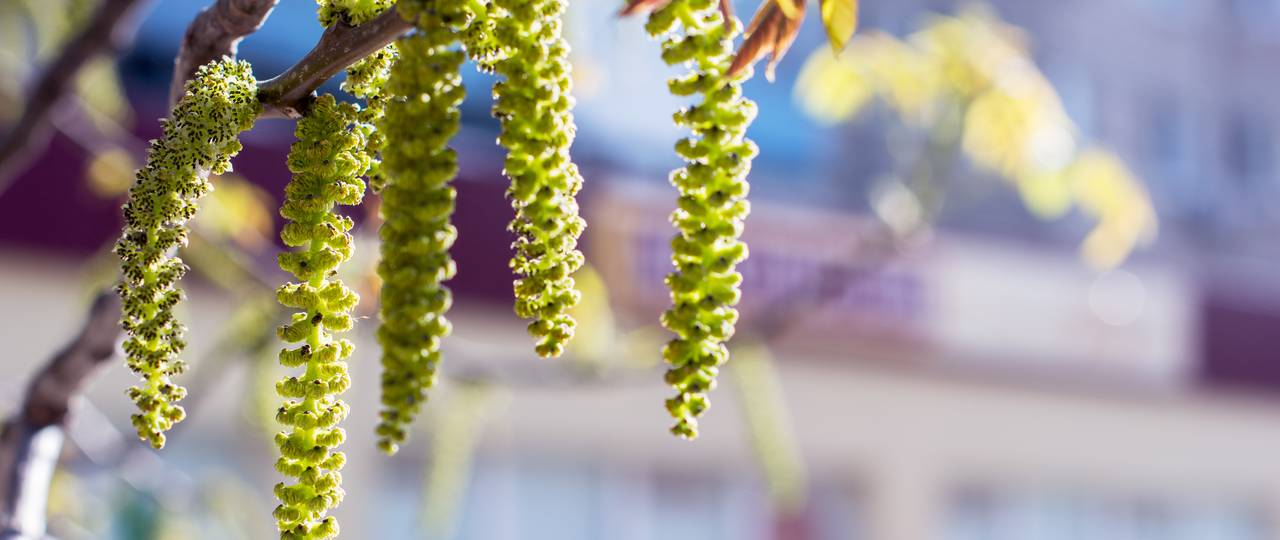Members Login

Channels
Special Offers & Promotions
Covid-19 risk increases with airborne pollen
Increased pollen concentrations correlate with higher SARS-CoV-2 infection rates
On Tuesday, March 9, at 3 pm CET, the team presented the findings published in the prestigious journal PNAS at an international online press conference – and highlighted ways in which people in high risk groups could protect themselves.
In the spring of 2020, the outbreak of the coronavirus pandemic appeared to coincide with the tree pollen season in the northern hemisphere. These observations prompted an international team of researchers to conduct an extensive investigation: The scientists wanted to know whether there is a demonstrable link between airborne pollen concentrations and SARS-CoV-2 infection rates.
Pollen is a significant environmental factor influencing infection rates
Under the leadership of first author Athanasios Damialis, the team at the Chair of Environmental Medicine at TUM collected data on airborne pollen concentrations, weather conditions and SARS-CoV-2 infections – taking into consideration the variation of infection rates from one day to another and the total number of positive tests. In their calculations, the team also included data on population density and the effects of lockdown measures. The 154 researchers analyzed pollen data from 130 stations in 31 countries on five continents.
The team showed that airborne pollen can account for, on average, 44 percent of the variation in infection rates, with humidity and air temperature also playing a role in some cases. During intervals without lockdown regulations, infection rates were on average 4 percent higher with every increase of 100 grains of airborne pollen per cubic meter. In some German cities, concentrations of up to 500 pollen grains per cubic meter per day were recorded during the study – which led to an overall increase in infection rates of more than 20 percent. In regions where lockdown rules were in effect, however, the infection numbers were on average only half as high at comparable pollen concentrations.
Airborne pollen weakens immune response
High pollen concentrations lead to a weaker immune response in airways to viruses that can cause coughs and colds. When a virus enters the body, infected cells usually send out messenger proteins. This is also the case with SARS-CoV-2. These proteins, known as antiviral interferons, signal nearby cells to escalate their antiviral defenses to keep the invaders at bay. Additionally, an appropriate inflammation response is activated to fight the viruses.
But if airborne pollen concentrations are high, and pollen grains are inhaled with the virus particles, fewer antiviral interferons are generated. The beneficial inflammatory response itself is also affected. Therefore, on days with a high concentration of pollen, it can lead to an increase in the number of respiratory illnesses. This also holds true for Covid-19. Whether individuals are allergic to the different pollen types is irrelevant.
“You cannot avoid exposure to airborne pollen,” says Stefanie Gilles who is also first author of the study. “People in high-risk groups should, therefore, be informed that high levels of airborne pollen concentrations lead to an increased susceptibility to viral respiratory tract infections.” Athanasios Damialis emphasizes: “When studying the spread of SARS-CoV-2, environmental factors such as pollen must be taken into account. Increased awareness of these effects are an important step in preventing and mitigating the impact of Covid-19.”
Particle filtering masks provide protection
What can vulnerable people do to protect themselves? Claudia Traidl-Hoffmann, last author and a professor of environmental medicine, advises people at high-risk to monitor pollen forecasts over the coming months. Claudia Traidl-Hoffmann states: “Wearing a particle filtering mask when pollen concentrations are high can keep both the virus and pollen out of the airways.”
Publications:
A. Damialis, S. Gilles et. al.: Higher airborne pollen concentrations correlated with increased SARS-CoV-2 infection rates, as evidenced from 31 countries across the globe
Proceedings of the National Academy of Sciences of the United States of America (PNAS), March 2021
DOI: 10.1073/pnas.2019034118
S. Gilles, C. Blume et al.:
Pollen exposure weakens innate defense against respiratory viruses.
Allergy. March 2020, 75(3):576-587.
DOI: 10.1111/all.14047
Learn more about research at TUM
Media Partners



